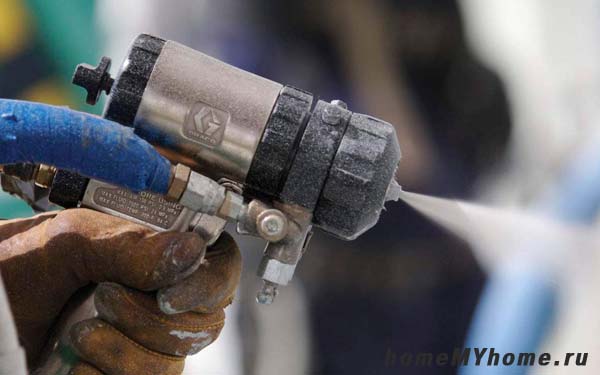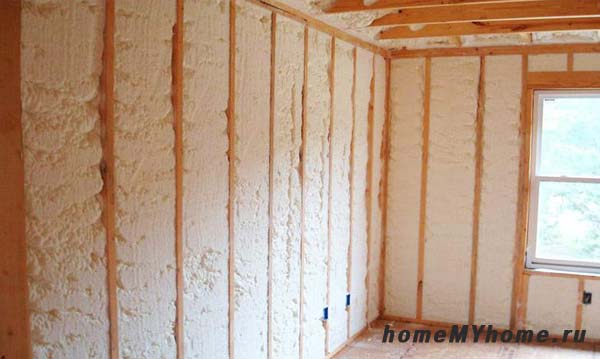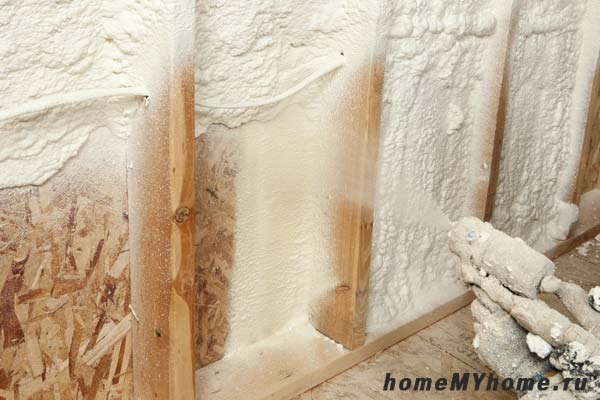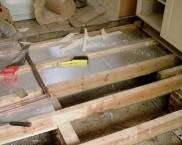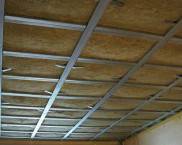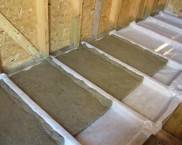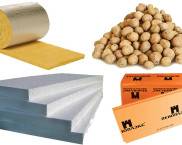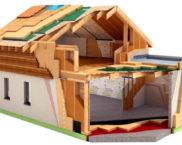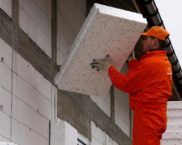Insulation for walls inside the house in the country or how not to freeze
Choosing the right insulation for the walls inside the house in the country is not as easy as it seems to many. In this review, we will assess the advantages and disadvantages of popular types, analyze the comparative characteristics of each of them, consider how to organize warm rooms in the country so that the house is comfortable. After all, if you plan to visit this place out of season, that is, during the cold season, you should make sure that there is complete comfort, regardless of the temperature.
The content of the article
Video: modern home insulation
Heaters: options, advantages, disadvantages
Different heaters for walls inside the house in the country will differ in characteristics, ease of installation and price. We will consider the most popular options that may well be suitable for a country house.
Penoplex is the most popular material
This is a well-known foam. Its sheets of standard meter height and width are either 0.5 or 1 m. It is convenient to work with it, since the sheets keep their shape.
But at the same time, it will not be possible to get rid of the joints of the material, and if they are not sealed, then no matter how many layers you mount, the cold will penetrate through the walls. Installation technology is simple, and there are different options for it. It can be glued with the help of a special composition of the board directly on the walls, you can lay them in pre-mounted niches. The latter option is suitable if you plan to decorate the room with facing plates.
This insulation is suitable for walls, ceilings and floors. The most important thing is to seal the joints. It is also important that the layer of insulation is at least 100 mm; for this it is better to use a two- or even three-layer scheme.In this case, the next layer must be laid so that the joints of the previous one overlap with a whole sheet.
Benefits:
- Price;
- Ease of installation;
- High energy saving properties.
Disadvantages:
- The need to lay in several layers;
- Mandatory sealing of panel joints.
Foamed polyurethane - a new word in insulation
This is a new generation of insulation, for its installation, or rather application, you need to use a special spray.
It is also important to consider that this instantly hardening composition will not withstand any cladding and plasters, so on top of it you need to mount finishing panels, lining or drywall sheets.
Installation technology: first, the formwork is organized, then the formed space is foamed with the composition, after that it is necessary to lay hydro and vapor barrier.
Benefits:
- Monolithic structure;
- Absence of cold bridges provided that steam and waterproofing;
- Installation speed.
Disadvantages:
- The need to equip an additional wall;
- Obligation to install formwork;
- The cost of work.
Mineral wool - a universal solution
This versatile insulation is widespread in our country. Country house it is convenient and quick to insulate it, and you do not need to involve additional hands - all the work can be done independently.
Installation of mineral wool is carried out in a crate. When using matte mineral wool, instead of rolls, installation is greatly simplified, since it has the necessary rigidity. When installing the battens, it is important to pay attention to the fact that the distance between the planks should be 3-5 cm less than the width of the panel - this will help the material, thanks to its wadded structure, to fill all the cracks. The thickness of the lathing bar must correspond to the layer of insulation that will fit.
Benefits:
- Cost;
- Ease of installation;
- Thermal insulation qualities.
Disadvantages:
- When working, it is necessary to use special clothing, glasses, a respirator, as small particles of fibers can irritate the skin and cause discomfort.
Dry bulk materials
For insulation, you can also use bulk materials, for example, expanded clay and ecowool. Non-standard options include backfilling with moss, pine or spruce needles, hay, sawdust. These methods are eco-friendly and safe for the environment, but their installation is carried out mainly for floors and ceilings, moreover, mice like to live in natural insulation.
Technical characteristics of heaters
All heaters have their own technical characteristics that can affect the ease of installation and their heat-saving properties, for the right choice you should familiarize yourself with them.
Varieties and properties of mineral wool
The class of mineral wool includes glass wool, stone, slag. They all have one thing in common - they are the finest fibers, which, thanks to their structure, can guarantee a high level of thermal insulation.
- Glass wool has fibers 5-15 microns thick and 15-50 mm long;
- Slag wool and stone wool, fibers 4-12 microns thick, up to 16 mm long.
All mineral wool is highly hygroscopic, so it is important to use waterproofing during installation. When working with mineral wool, you must follow safety rules.
Penoplex technical indicators
Penoplex it is a comfortable insulation in all respects, its main characteristics are:
- Minimal water absorption;
- Small coefficient of thermal conductivity and vapor permeability;
- Long service life;
- Resistant to compression;
- Convenience of installation and processing, you can cut it with an ordinary knife;
- High environmental friendliness, although freons are used in its production, they are absolutely harmless to humans;
- Zero chemical activity, no building material will react with penoplex.
Properties of polyurethane foam
In a rigid (solidified) form, polyurethane foam has the lowest thermal conductivity of all insulation materials, and it does not need such a large layer as for mineral wool or foam.
In addition, this type of insulation is very light, you do not need to use additional devices to fix it, it is simply sprayed onto the surface. This monolithic coating guarantees the absence of cold bridges, the material is environmentally friendly and durable.

Among all heaters, polyurethane foam has the smallest layer thickness with the same thermal insulation
Related article:
Thermal conductivity table of building materials. Practical application of thermal conductivity coefficients of various materials in a separate review.
conclusions
Insulation of walls, ceilings, floors, windows, a country house is a whole complex of manipulations aimed at maintaining a positive temperature inside even in your absence. There are many options for insulation: from the usual materials that the chemical industry gave us to the "folk" ones that have been used in our territories from time immemorial. What to choose - the decision is yours.
Video: wall insulation in the house with polyurethane foam








